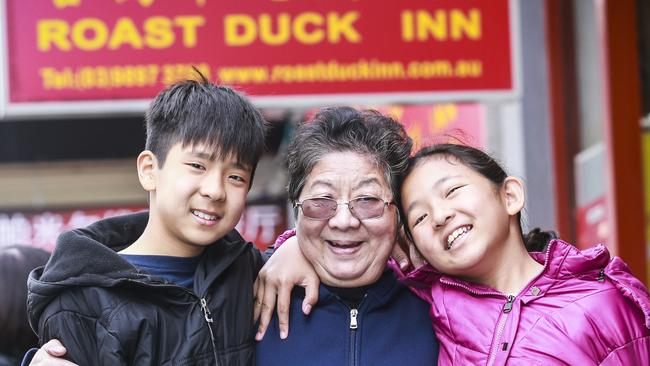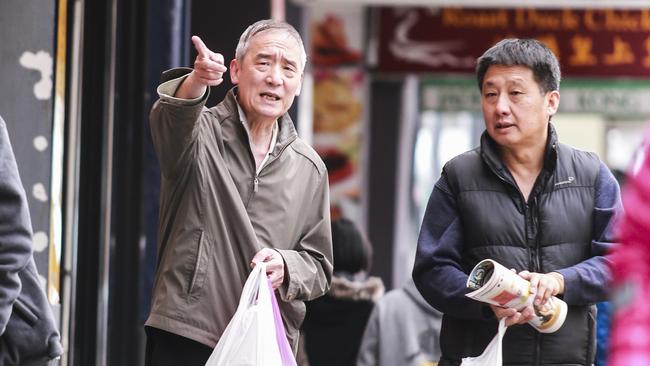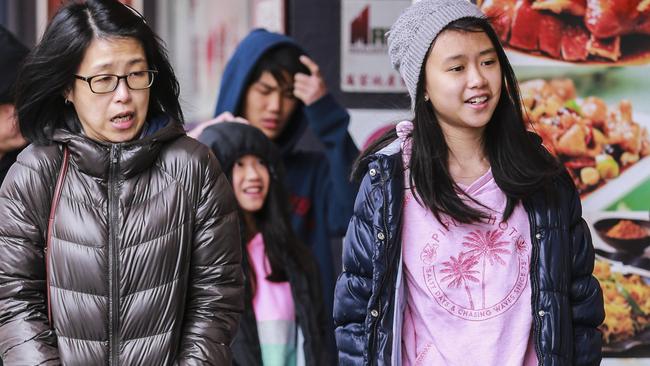Record migration to Melbourne is changing the face of our city
MIGRANTS now comprise up to 80 per cent of residents in some Melbourne suburbs as the city continues to be transformed by a record intake of arrivals, census figures show.

VIC News
Don't miss out on the headlines from VIC News. Followed categories will be added to My News.
MIGRANTS now comprise up to 80 per cent of residents in some Melbourne suburbs as the city continues to be transformed by a record intake of arrivals mainly from Asia, census figures show.
Foreign-born concentrations are growing in some outer areas with cheaper housing, while overseas students living in apartments have changed the demographic landscape of certain inner suburbs.
According to the 2016 census, the suburb of Melbourne, which includes the CBD and parts of St Kilda Rd, was the state’s migrant capital with 80 per cent of residents born abroad.

Melbourne has a high number of foreign students who were counted in the census, and about a third of the suburb identified as having Chinese ancestry.
The next biggest migrant suburb was Clayton with 75 per cent of residents born overseas, the main groups hailing from China, India and Malaysia.
CENSUS REVEALS HOW HIGH MIGRATION IS TRANSFORMING MELBOURNE
Dandenong had a foreign-born population of 72 per cent, with Afghanis, Indians and Sri Lankans the biggest communities.
Greater Melbourne itself is 40 per cent migrant, similar to Sydney and Toronto in Canada, but much higher than the foreign-born populations of big cities in the US.
Dr Bob Birrell, from the Australian Population Research Institute, said that about 55 per cent of the new housing stock needed for Melbourne was due to migrants, and the less well-off were attracted to cheaper areas like Springvale and Dandenong.

“We’re getting significant concentrations resulting from that underlying structural problem,” he said.
Dr Birrell said that the high proportion of Chinese in places like Melbourne CBD and Carlton reflected huge number of overseas students and others on temporary visas living in small units in towers.
Victorian Multicultural Commission chair Helen Kapalos said the city’s growing diversity was positive and the state had an enviable reputation of settling migrants.
“We need to think about all of those aspects that help our new arrivals integrate because it’s for all of us,” she said.
The census data show that the top suburbs for Chinese residents are Box Hill (35.4 per cent Chinese ancestry and 27.6 per cent China-born), Melbourne (32.6 per cent and 21.5 per cent), Clayton (32.2 per cent and 22.6 per cent) and Carlton (30.8 per cent and 22.6 per cent).
The census revealed that one-in-five Glen Huntly residents were born in India; Turkish migrants comprised 11 per cent of people in Dallas and Meadow Heights; while one-in-five residents of Springvale and Springvale South were born in Vietnam.
Mt Eliza had the biggest concentration of British migrants (18 per cent); for Iraqis it was Meadow Heights (9.3 per cent); and Clarinda (6.1 per cent) for the Greek-born.


